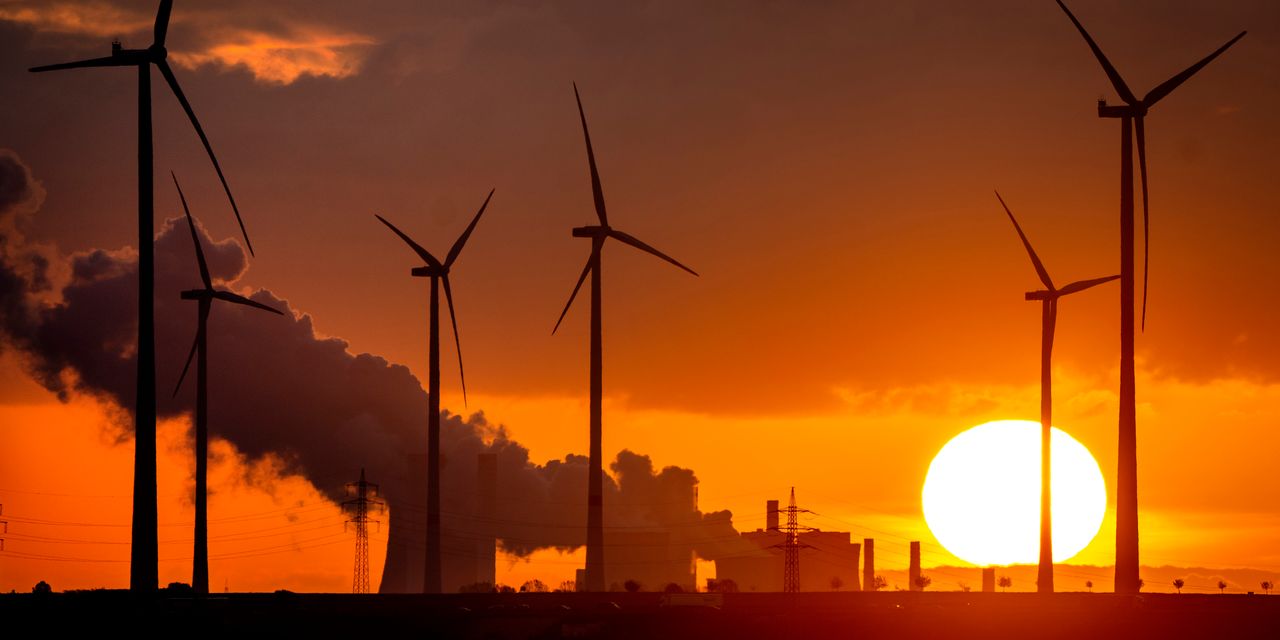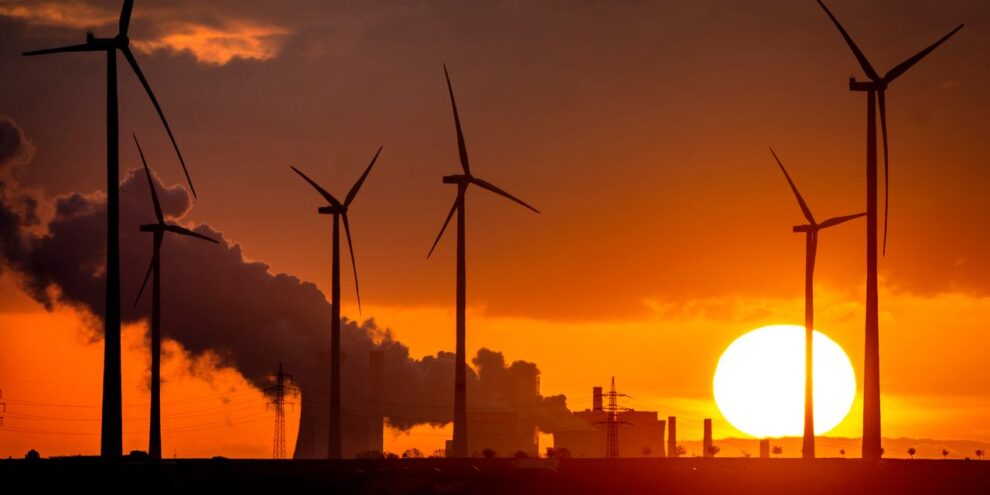
Global travelers hopped on airplanes in greater numbers last year after taking a break from travel during the pandemic, while more cities returned to burning coal for heat and electricity as Russia’s invasion of Ukraine led to shortages of natural gas.
The rebounds for coal and jet travel are the leading factors that caused the globe to emit more carbon dioxide in 2022 than in any other year on record dating to 1900, a report from the International Energy Agency said Thursday.
Emissions of atmosphere-warming CO2 from energy production were up 0.9% to reach 36.8 gigatons in 2022, the IEA said, although it added that predictions had called for an even greater jump. For comparison, the mass of one gigaton is equivalent to about 10,000 fully loaded aircraft carriers, according to NASA.
Increased deployment of renewable energy ICLN, +2.06%, electric vehicles TSLA, +3.61% and heat pumps helped prevent an additional 550 megatons of CO2 emissions, the IEA said.
“Without clean energy, the growth in CO2 emissions would have been nearly three times as high,” said Fatih Birol, the IEA’s executive director.
“However, we still see emissions growing from fossil fuels, hindering efforts to meet the world’s climate targets. International and national fossil fuel companies are making record revenues and need to take their share of responsibility, in line with their public pledges to meet climate goals,” Birol added.
A voluntary global pact first struck in Paris in 2015 calls for a limit of no more than 1.5 degrees Celsius of warming if the worst of climate change is to be averted.
“ ‘Without clean energy, the [2022] growth in CO2 emissions would have been nearly three times as high.’”
CO2 is released when fossil fuels such as oil CL00, +0.23%, coal and natural gas NG00, +0.41% are burned to power cars, planes, households and much of the world’s industry. When CO2 and other gases, including the shorter-lasting but more potent methane, enter the atmosphere, they trap heat and contribute to the warming of the climate. Global warming is leading to higher average temperatures, longer drought periods and more intense heat waves, acidifying oceans, crop damage and other factors that are costly to both human health and the economy.
In another recent report, the IEA came down hard on the oil and gas industry for not diverting more of their record profits toward efforts to limit methane emissions.
That report, released in February, called out Big Oil for its refusal to invest the some $100 billion needed for further technologies to speed up cuts in emissions — which, as the IEA’s report stressed, amounts to less than 3% of the industry’s profits in 2022.
It’s also true that climate change itself is driving up the short-term need to burn more fossil fuels, Thursday’s IEA report showed. For example, droughts reduced the amount of water available for hydropower, which increased the need to burn fossil fuels. And heat waves drove up demand for electricity.
Russia’s war and the fallout from COVID
CO2 emissions from coal grew 1.6% last year. Many communities, primarily in Asia, switched from natural gas to coal to avoid high natural-gas prices that were worsened by Russia’s invasion of Ukraine, the IEA said.
And as global air traffic increased, CO2 emissions from burning oil grew by even more than those from coal, at 2.5%, with the aviation sector responsible for about half the surge. Oil emissions are running below prepandemic levels, the IEA said.
Globally, air traffic in 2022 was at about 69% of prepandemic levels, but in December 2022, total air traffic rose 39.7% compared with December 2021, the International Air Transport Association said.
Don’t miss: Abigail Disney says private jets are a climate ‘cancer,’ calls out Elon Musk and other rich ‘babies’
Global emissions have grown in most years since 1900, and that growth has accelerated, according to the IEA. One exception was the pandemic year of 2020, when travel all but came to a standstill.
Can’t blame China this time
According to the latest report, China’s emissions were broadly flat in 2022, as strict COVID-19 measures and declining construction activity led to weaker economic growth and reductions in industrial and transport emissions. The European Union’s emissions fell by 2.5%, thanks to record deployment of renewables, which helped ensure the use of coal was not as high as some had anticipated.
In the U.S., emissions grew by 0.8% as buildings increased their energy consumption to cope with extreme temperatures.
Don’t miss: Biden’s first veto could affect your 401(k) and how companies react to climate change
The IEA, while considered an industry watchdog, has historically shown allegiance to energy producers. But it shocked the industry and environmental interests alike in 2021 when it said the world must stop investing in new oil and gas wells in order to hit ambitious climate goals, according to its report at the time. This was a more aggressive stance than the agency had expressed in the past.
According to the IEA, there is a narrow but viable pathway for redesigning a global energy sector that produces net-zero greenhouse-gas emissions by 2050 — the midcentury target adopted by the U.S., the European Union and some others.
Read more from MarketWatch’s Living With Climate Change section.











Add Comment